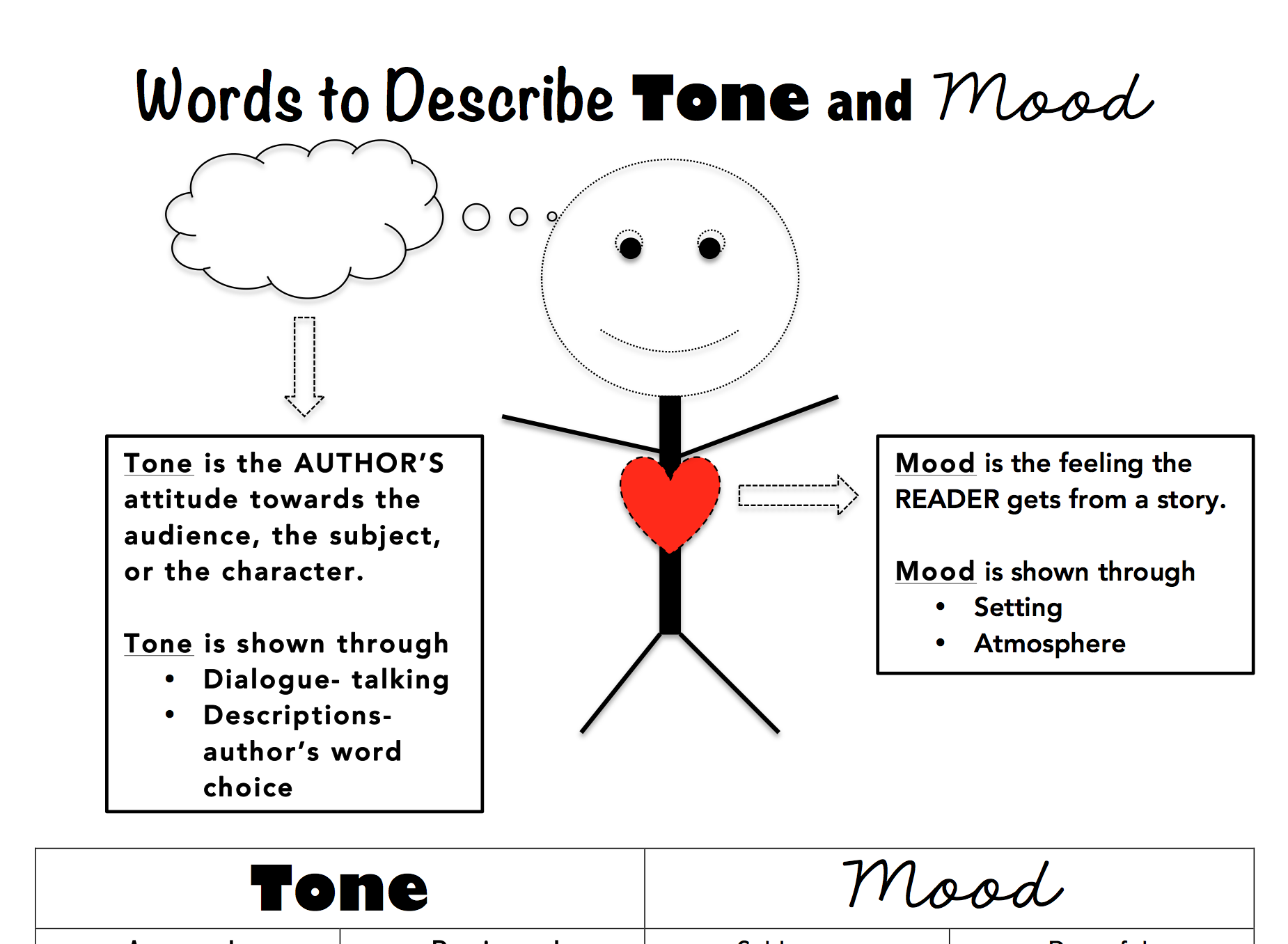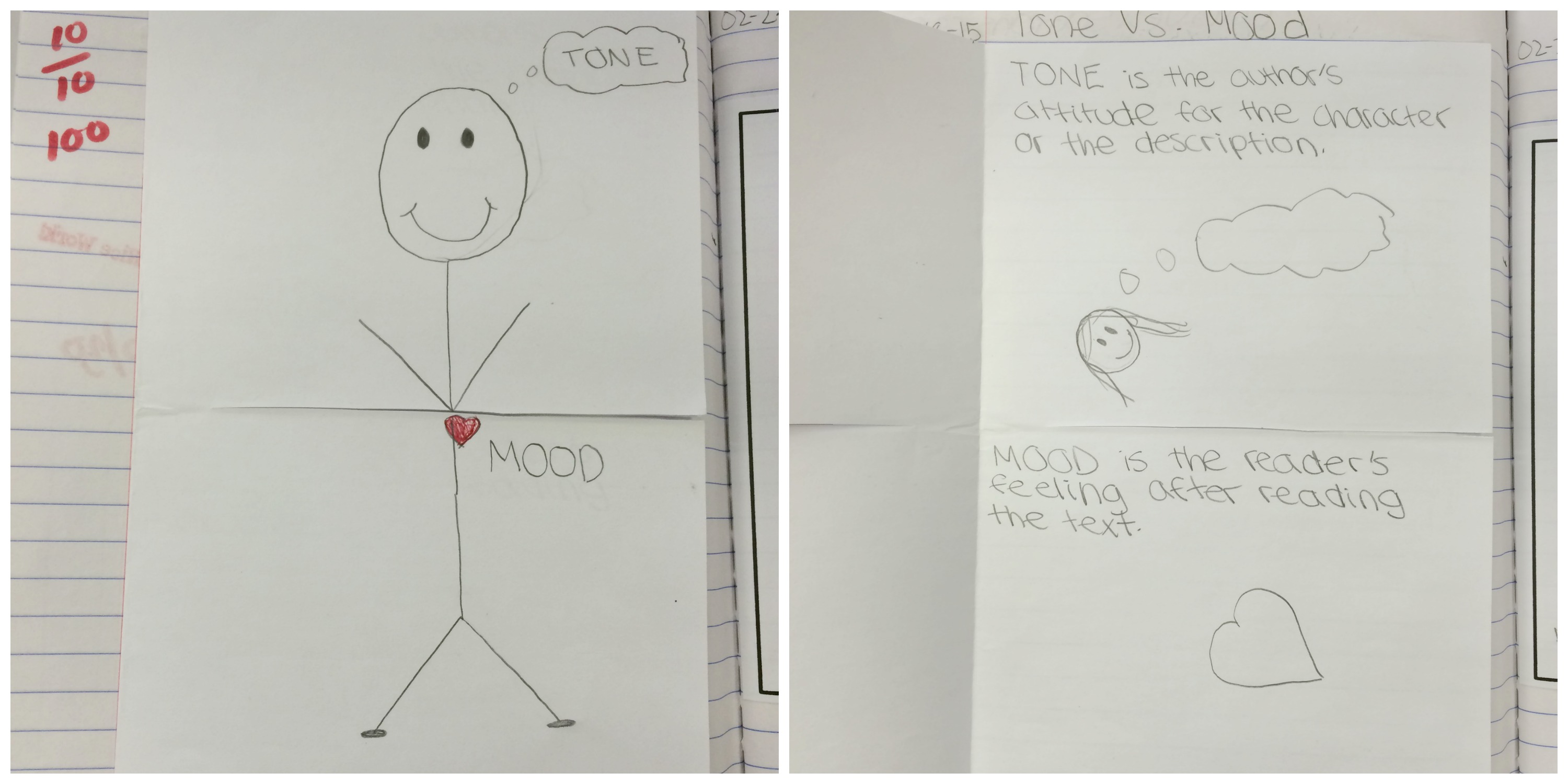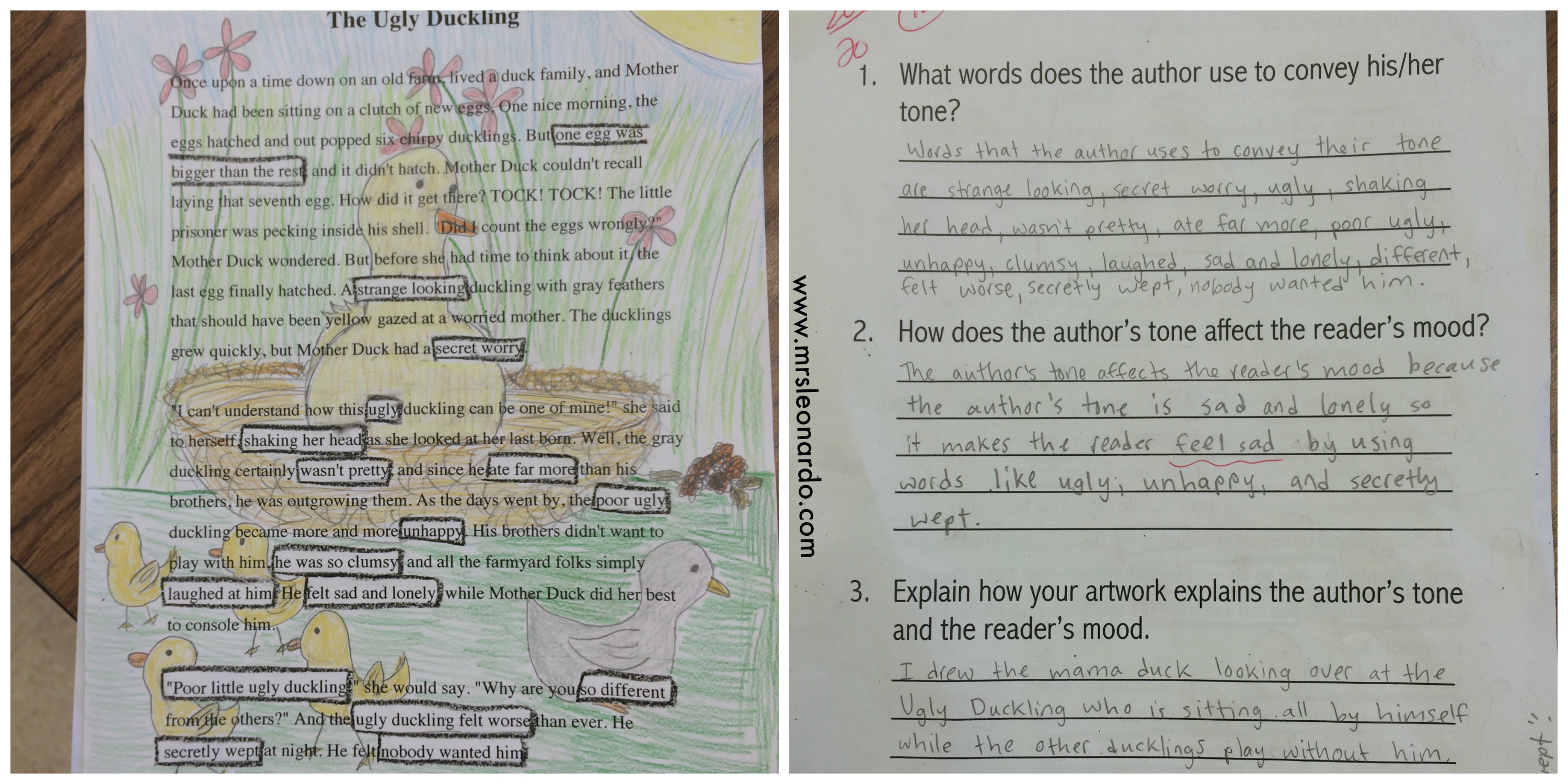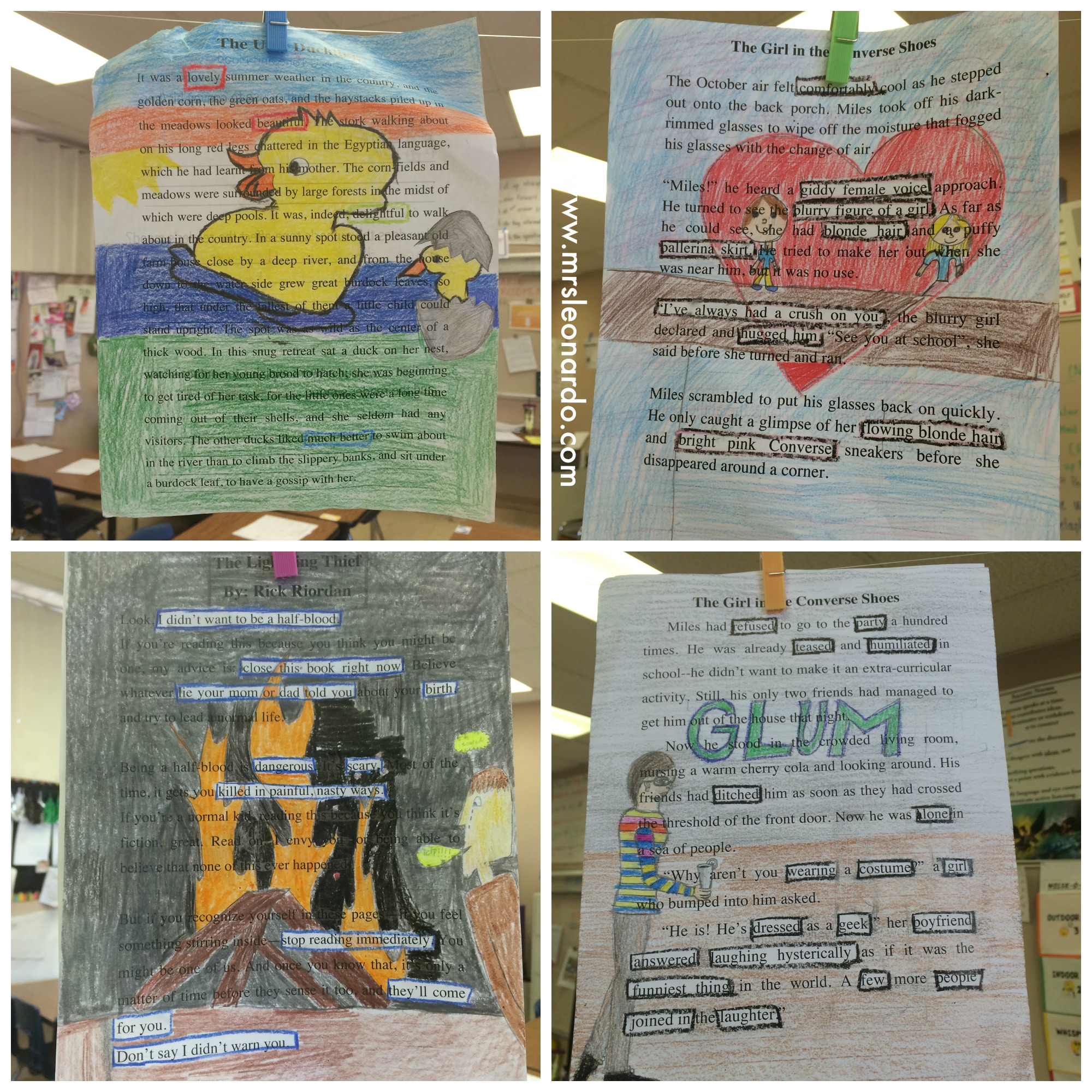My classes learned about tone and mood for six days nearly two weeks ago. We learned
- Tone is the author’s attitude towards the audience, the subject and the character. Tone is shown through dialogue (talking) and descriptions (author’s word choice). When I discussed tone, I always pointed to my head to indicate the author’s thoughts.
- Mood is the feeling the reader gets from a story, poem, passage, video, etc. Mood is shown through setting (location) and atmosphere (everything in the the setting). Since I had a little hand movement for tone, I had to have one for mood! Mood was simply two hands in the shape of a heart over the heart.
When students had some free time, they were able to access my Blendspace account to watch a few more videos on their own and write down the tone and mood for each video and explain how they determined the tone and mood.
After analyzing several passages and excerpts, my first period class was given an assignment that required them to read an excerpt from a book, box words that helped them to determine the author’s tone, and then draw a picture over the words to help explain the mood. Finally, they had to answer three questions about tone, mood, and their drawing.
Going forward:
- Students will analyze tone and mood in poetry and literature.
- Students will explain how figurative language plays a major role in tone.
- Students will write paragraphs and essays that analyze the author’s tone.
Next year:
- Teach author’s tone and reader’s mood earlier in the year and complete short projects about author’s tone throughout the year.



